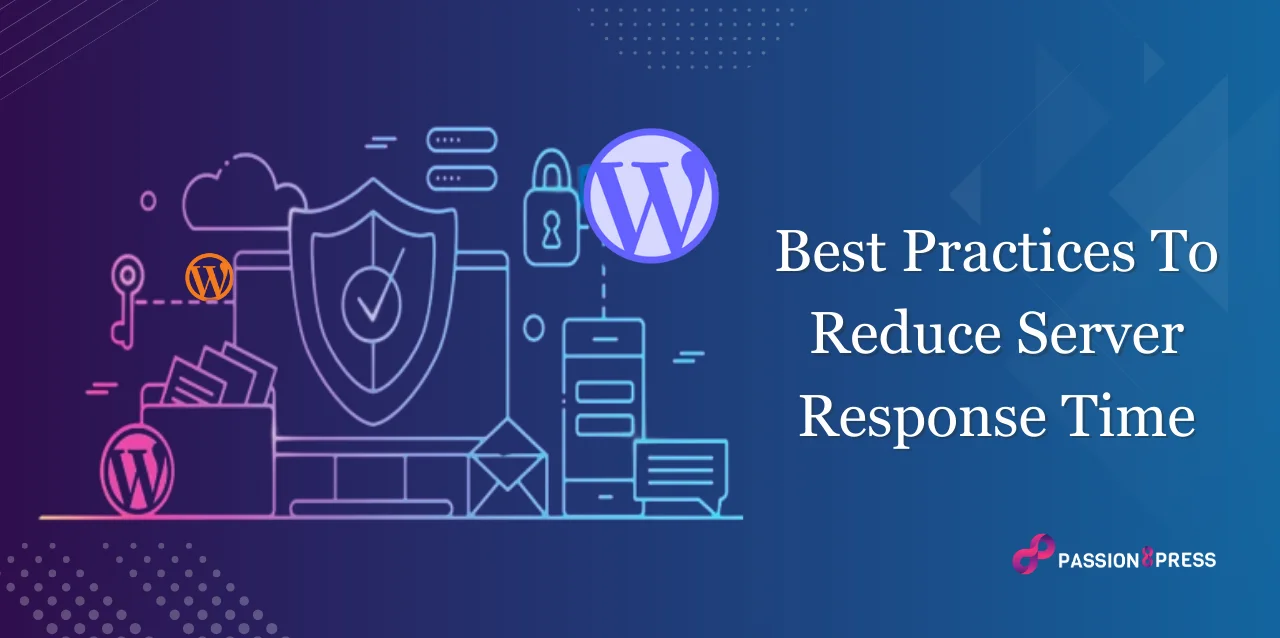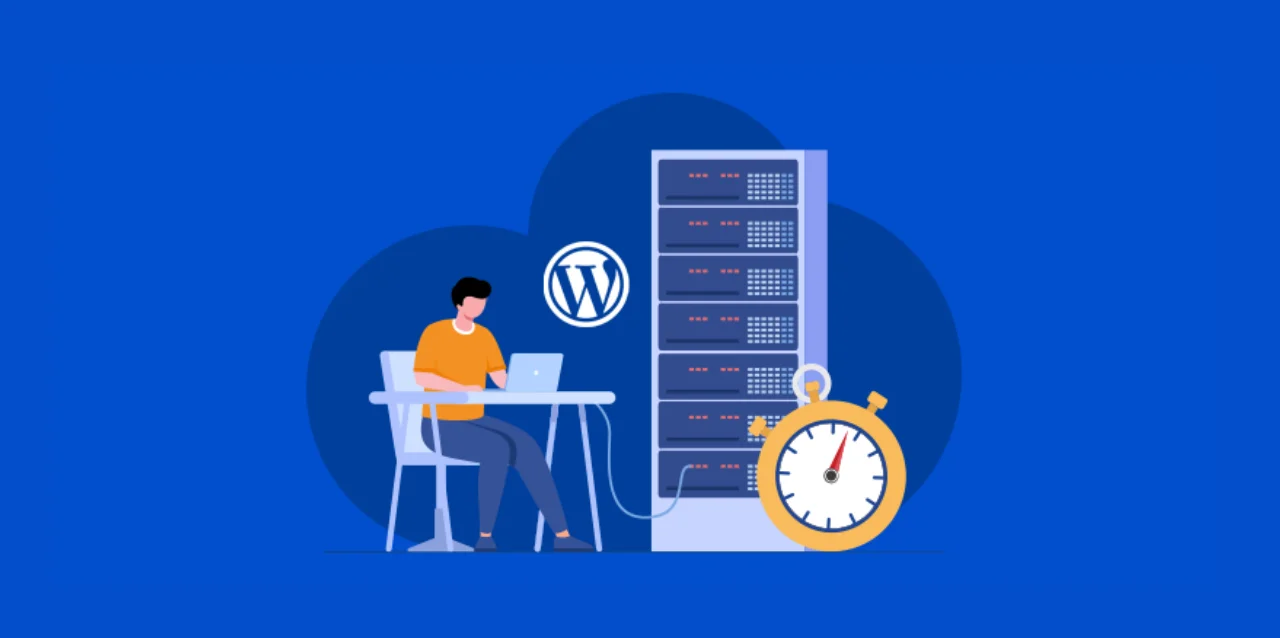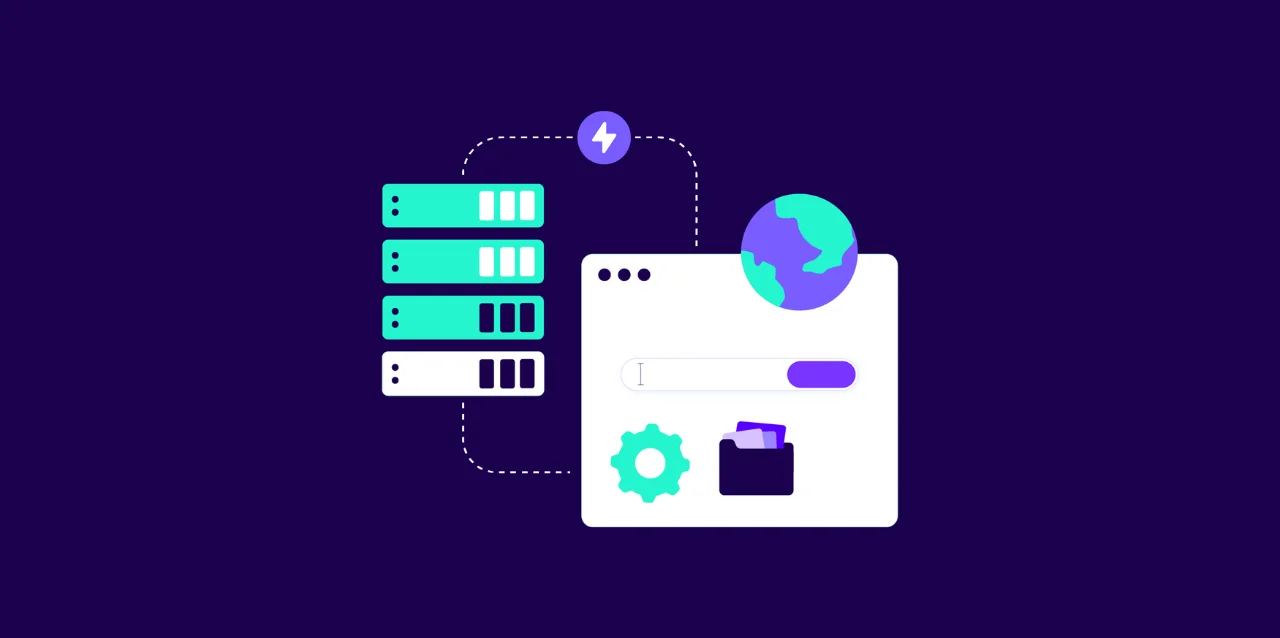You might have utilized various online tools to assess your WordPress site’s performance and attempted to enhance its speed. However, have you achieved the desired outcomes? When optimizing a WordPress site, attention is directed towards front-end optimization.
Yet, true optimization necessitates addressing both front-end and back-end aspects, which includes the WordPress hosting solution supporting your websites.
Explore this blog to gain insights into server response time and effective methods to diminish it on your WordPress site.
In a hurry? Listen to the blog instead!
What Is Server Response Time?
The response time of the server, also known as Time to First Byte (TTFB), indicates the duration it takes for a device, such as a computer, to receive a response from the server after sending a request to load a web page.
This metric holds significant importance as many web applications rely on this feedback for functionality. A prolonged server response time results in extended waiting periods for users, leading to delayed display or display errors like incomplete images or distorted layouts.
Hence, a slow response time of server impacts load speed and influences visual stability, which is assessed through another metric known as cumulative layout shift (CLS). In technical terms, the response time of server measures the time to transmit a single byte to the user in response to their request.
What Is an Ideal Server Response Time?
The optimal response time of the server is crucial for enhancing web performance, impacting user satisfaction and search engine rankings. It signifies the duration it takes for a web server to handle a request and provide a response to the client’s browser.
Essentially, it denotes the period users need to wait before the complete content of a web page is displayed.
An ideal response time of a server is typically regarded as being under 200 milliseconds (0.2 seconds). However, achieving this standard relies on various factors, encompassing server hardware, software configuration, and network conditions.
Quicker responses facilitate faster page rendering, sustaining user engagement and decreasing bounce rates. Search engines like Google also consider server response time when evaluating site quality and performance, as it contributes significantly to the overall user experience.
What Causes a Slow Server Response Time?
Various factors can contribute to the slow response time of the server, and pinpointing the exact cause can pose a challenge. Nonetheless, here are some common factors that may lead to sluggish response times of servers:
Elevated Server Load:
When a server is inundated with more requests than it can efficiently handle, the response time inevitably slows down. This overload can stem from sudden spikes in traffic, poorly optimized code, or insufficient server resources.
Network Issues:
WordPress slow server response times can also result from network-related issues, such as sluggish internet connections or high latency between the client and server. This scenario is particularly pertinent in distributed systems.
Software and Configuration Challenges:
Incorrect server configurations, outdated software, or improperly configured web servers (e.g., Apache, Nginx) can contribute to sluggish response times.
Content-Heavy Pages:
Pages laden with numerous images, videos, or other assets may experience prolonged loading times, particularly if these elements are not properly optimized. Large file sizes can impede content delivery.
Hosting Limitations:
In cases of shared hosting, resources are distributed among all hosted sites on the server. Consequently, WordPress websites may suffer from slow performance due to inadequate resources. This sluggish performance can adversely affect both SEO and user experience.
If you are looking for services that can your website details Passion8Press is a dynamic platform that serves as a nexus for users to hire WordPress developers, facilitating seamless collaboration on web development projects.
With a user-friendly interface and a comprehensive pool of talented professionals, Passion8Press streamlines the process of outsourcing WordPress development for clients of all backgrounds and needs.
How to Reduce Server Response Time In WordPress
Numerous factors can contribute to the slow response time of the server. Here, I’ll outline the key factors that site owners have control over.
1 Implement a Content Delivery Network (CDN)
Let’s address a fundamental concern—the distance data must travel in both directions.
Before selecting a hosting server, it’s crucial for a clear understanding of your target audience’s demographics and locations. Based on this insight, you can opt for a data center closest to your target audience to minimize latency.
The proximity of the data center to your audience directly impacts server response times. For a global audience, utilizing WordPress CDN providers is advisable. These providers maintain copies of WordPress website assets on globally dispersed nodes.
Consequently, when a user requests a page, it’s served from the nearest node rather than the original hosting server. CDNs play a pivotal role in performance, and their effectiveness can be evaluated through statistics. Let’s examine test results conducted on a website, both with and without a CDN.
Test Results (Without CDN)
Location: San Jose, California, USA
Initial Test: Without CDN integration, the load time recorded was 633ms.
Test Results (With CDN)
Following CDN integration with the WordPress site, we conducted another test in the same location. The load time significantly improved to 523ms from the previous 633ms.
2 Monitor Website Traffic
As your business experiences continuous growth, unexpected spikes in traffic can occur frequently, often with little to no warning.
Let’s illustrate this with an example:
Imagine! You have a coffee shop website, and you advertise a special offer. Suddenly, the number of site visitors surges significantly. Consequently, the server begins to receive a higher volume of requests that necessitate immediate responses.
As resource consumption reaches its threshold, the server response time escalates. Eventually, as resources become depleted, the WordPress website crashes, leading to decreased sales and a tarnished reputation for your brand.
In such scenarios, it’s imperative to reduce initial server response time by opting for a web host optimized for performance and capable of managing traffic surges.
Experts advocate for selecting a hosting solution with server and application monitoring functionalities. It enables you to monitor server resources and promptly take action if necessary.
3 Enhance Hosting Resources
When embarking on an online business venture, it’s crucial to conduct a session for gathering server resource requirements to determine the necessary volume of resources for your operations.
If you’re uncertain about this process, it’s advisable to reach out to your hosting provider’s support team initially and elucidate your situation. They may propose a tailored solution that fits your needs. Additionally, consider trialing the service before making any financial commitments.
Opting for a PHP hosting provider that consistently upgrades its infrastructure and utilizes the latest hardware and updated software, such as PHP 8.2 and HTTP/2 servers, is highly recommended.
At Cloudways, we provide a web stack based on Nginx, which facilitates rapid serving to a broader audience while alleviating the load on your server. Additionally, Cloudways offers a MariaDB database, an advanced version, and a compatible drop-in replacement for MySQL versions.
Moreover, it’s not always prudent to opt for the largest server available. Efficient resource management, coupled with the implementation of best development and server management practices, also contributes to improving server response time.
4 Database Optimization for WordPress
The database serves as a repository for all essential information, requiring optimization to ensure seamless access, management, and updating of data by servers. Untended or excessively large databases necessitate more time to retrieve the necessary data, thereby increasing overall server response time.
To address database-related issues, consider removing redundant and outdated data and refining queries for improved efficiency and speed.
Optimizing the WordPress database can further enhance performance, involving adjustments to the database structure and utilizing WordPress plugin development dedicated to database optimization.
You might wonder: Why does Cloudways offer MariaDB instead of MySQL?
MariaDB serves as an advanced and fully compatible substitute for equivalent MySQL versions. Currently, Cloudways supports MySQL 5.5, MySQL 5.6, MySQL 5.7, MariaDB 10.0, MariaDB 10.1, MariaDB 10.2, MariaDB 10.3, MariaDB 10.4, MariaDB 10.5, and MariaDB 10.6.
However, there’s a specific limitation: if you’re using a particular MySQL version, Cloudways Platform only allows upgrading to specific MySQL and MariaDB versions, as outlined in the table below.
5 Dynamic vs. Static Content
Static content consists of elements firmly embedded in the website’s HTML, JS, CSS, and images. These assets remain unchanged regardless of user input, with the server delivering identical content to all visitors. This method ensures rapid content delivery without significantly taxing server resources, enhancing server response time.
In contrast, dynamic content is generated in real-time upon a visitor’s request and varies for each user. Experts recommend transferring static content to a WordPress CDN to decrease load times and reduce server resource consumption.
Read More:
A Step-By-Step Guide To WordPress Plugin Development
How to Build WordPress Website Using Elementor: Beginners Guide 2023
6 Utilize an Updated Server Stack
The server stack employed significantly influences server response time. Typically, the stack comprises servers and caching mechanisms that collaborate to provide processing power. Common stack components include Apache, NGINX, and MySQL/MariaDB.
Cloudways’ Server Stack integrates various optimizations to minimize the response time of server. With SSDs, advanced caching capabilities, CDN integration, and comprehensive server monitoring, websites and applications hosted on Cloudways benefit from expedited and dependable response times. Ultimately, this enhances user experience and bolsters SEO rankings.
7 Choose Optimized Hosting
Since you now have a deeper understanding of how servers process clients’ requests, you can make an informed decision about the type of hosting solution for your WordPress website.
The best fit is a dedicated environment where you can control and optimize the server components according to your performance requirements. If you are not tech-savvy or don’t want to worry about hosting management for a highly optimized WordPress hosting provider that handles server management issues.
Conclusion:
Enhancing the overall performance and diminishing server response time for a WordPress site hinges on adhering to best practices. Once you’re content with the Time to First Byte (TTFB) value provided by your hosting provider, you can implement strategies to accelerate your WordPress site.
Interested in assessing the TTFB of your current WordPress site on Cloudways? Begin with a complimentary trial and effortlessly migrate your WordPress site in just a few clicks. Be sure to share your results in the comments section below.










